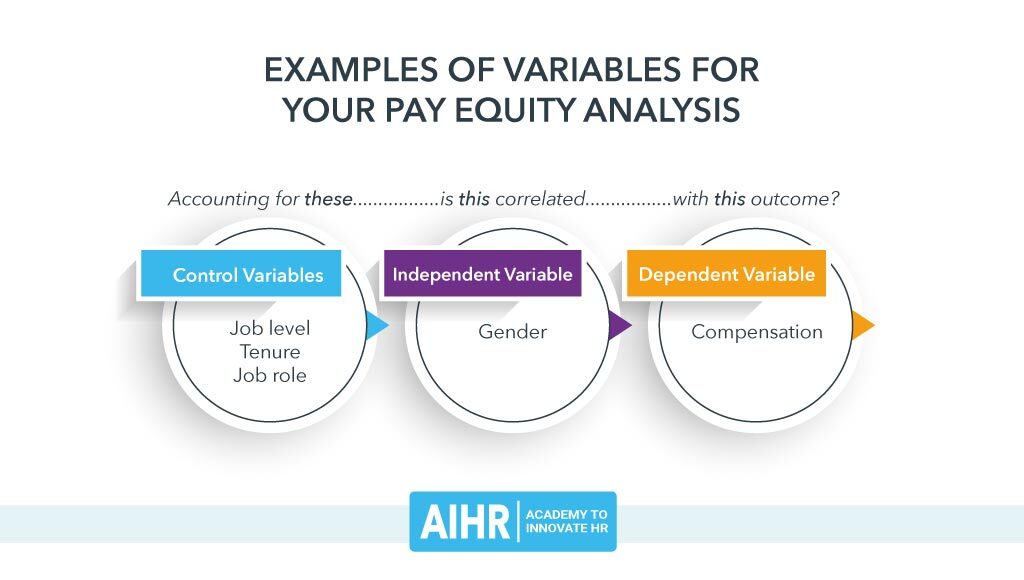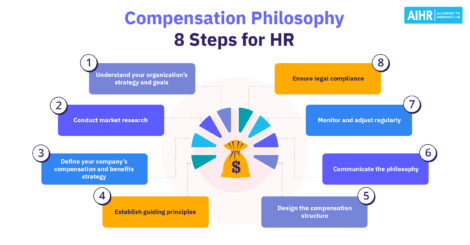A Guide to Compensation Analysis

Compensation analysis is vital to providing fair, equitable compensation. Smart organizations know that providing the right compensation is one of the key pillars to attract and retain the best talent. A thorough compensation analysis provides the data and insights for critical decisions as it relates to salaries and total benefits for employees.
Labor costs make up the majority of expenses for most organizations. It can account for up to 70% of the business cost. It is, therefore, critical to understand what this cost consists of. Although compensation analysis can be a complex process, it is a necessary tool to ensure fair workplace practices and contribute to your employee engagement strategy.
The purpose of this guide is to provide a basic understanding of compensation analysis and its associated benefits. It also offers practical steps on conducting a compensation analysis, which you should tailor to your organization’s needs.
Contents
What is a compensation analysis?
Benefits of conducting a compensation analysis
Seven steps to a successful compensation analysis
What is a compensation analysis?
A compensation analysis uses internal and external data to determine whether an employer rewards employees fairly or not for the work they are doing.
Here are a few key concepts in compensation analysis that you need to understand:
- External competitiveness – Employers compare their compensation data and practices to external companies. For example, Salesforce found that their engineer salaries were comparable to engineers at Microsoft. It was a fair comparison because of the size and geographical spread of both organizations. On the other hand, engineers at Slack were paid much less, but they are a much smaller organization.
- Internal equity – Employers compare employees’ salary and indirect compensation data to ensure fair compensation for the level and type of work done.
- Region – Employers compare compensation data of people doing similar work within a particular region.
- Level – Employers compare employees’ levels and the level at which they are compensated.
In all of the components mentioned above, it’s noteworthy to mention that even though salary data is important to look at, it is only one part of compensation. There are other employee benefits such as medical care, discounts, car, share schemes, and housing allowances.
A key characteristic of compensation is that it is dynamic. This means that it continually changes and progresses based on the internal and external environment.
As an example, Slack traditionally compensated employees based on localized benchmarks in their New York and San Francisco offices. Due to COVID-19, employees had to transition to working remotely. As a result, employees relocated to the cities where their homes are located. Slack subsequently revised their salary bands based on employees’ location.
Benefits of conducting a compensation analysis
A compensation analysis is a vital component of an organization’s talent management strategy, as it helps attract and retain the best employees on the market. Let’s take a look at other benefits of a compensation analysis:
- Salary benchmarking gives an impartial idea of competitive salaries and allows organizations to make informed decisions. Salary benchmarks provide data points, whether it is worth it or not to pay an employee above the average salary. It also helps understand the holistic remuneration packages offered by employers.
- Evaluating pay equity allows organizations to compensate employees doing the same level of work in a fair way. Conducting a comprehensive compensation analysis also enables you to correct historic pay gaps.
- Transparent compensation decisions leave the decision-making of salaries in the hands of accurate and impartial data. This leaves employees with a higher level of trust in the organization and their managers.
- Compensation analysis is dynamic, as mentioned before, and thus, you’re able to make projections based on future needs or employees and how this may affect your compensation strategy.
- Identifying opportunities – Through a comprehensive compensation analysis, you can identify where you can improve your compensation strategy. You may be able to find different ways to remunerate employees, for example.
It can be a part of your HR reporting.
Seven steps to a successful compensation analysis
Now that you understand what a compensation analysis is and its benefits, let’s take a look at the practical steps of how to do a compensation analysis.
1. Explore the current state of compensation
The first step is to gather and consolidate all compensation data in your organization. Some companies already have compensation analysis software that helps with this, or others use a spreadsheet with data from their HRIS. Whatever your approach may be, make sure that the information you collect includes the following:
Data Description Job Descriptions An up to date job description for every job in the organization. This should include job titles, roles and responsibilities, level, experience needed, and education. This step could take up to six to eight weeks, depending on the size of your organization. Organization compensation philosophy This information is usually embedded in the company handbook, and the deeper philosophy sits with the CEO or HR Heads. A compensation philosophy discusses the organization’s compensation philosophy and how they reward employees. Salary benchmark This is usually an annual survey that is completed, which includes pay structures and salary information. It compares internal pay data to the external market. Depending on the time of the year, you may need to use the previous year’s data or wait until the new compensation market analysis data is published. Employee information You need to have an accurate headcount of the number of employees per department. This information also needs to include the following information:
– Age
– Location
– Working hours
– Exit / Intake data
You also need to ensure you collect third party information that could be vital to your organization’s compensation analysis efforts. Companies such as Korn Ferry, Deloitte, and PWC typically have large data sets that include global and local salary and compensation information on a mass scale.
Check with the relevant HR bodies in your country as to the most reputable and reliable companies with these data sets, as they will act as a valuable comparative information source.
2. Determine the types of analyses you are going to conduct
You need to consult with key stakeholders to determine the purpose of your compensation analysis. This will guide you to determine the type of compensation analysis you will be conducting.
- For example, suppose a CEO was interested in why employees’ salaries were disproportionately increasing each year compared to the market. In that case, you may want to conduct a salary analysis of employees who have entered and exited the organization.
- If you need a snapshot to understand the cost per employee, you may conduct a “Headcount analysis” to provide an accurate picture of staffing levels and compensation per employee.
- Another example is that you may want to understand why so many high-talented employees are leaving your organization. A retention analysis looks at compensation levels and performance data and compares it to internal and external parity to make sense of this.
To reiterate, your compensation analysis should always be based on purpose. This will ultimately help you extract meaningful information and present it in a palatable way.
3. Choose the right technology
To analyze compensation data, you can either use an Excel spreadsheet or compensation analysis software. Let’s explore these two options within a bit more detail:
Excel
Microsoft Excel has, for a long time, been the favored tool to analyze compensation data. For an organization that wants to keep its operating expenses down, this is a great solution. It’s also suitable for small organizations as the calculations needed to be done will likely not be that complicated. Even a novice at Excel would be able to use it.
On the other hand, however, Excel is prone to human error. Multiple people can access a spreadsheet, and a misplaced comma can yield inaccurate and consequential results. It’s also not automated. So, if an employee leaves the organization, it requires someone to delete that employee off the spreadsheet. Excel is also not the most ‘attractive format’ to present to stakeholders. It requires manual copying and pasting of information into presentations, which can again lead to errors, and it’s also extra work.

Compensation analysis software
Modern compensation analysis software makes managing salary information seamless and straightforward. Most companies that offer compensation analysis software are cloud-based. Therefore, salary surveys and market prices are already plugged into the system and regularly updated. It makes it easier and more up-to-date as internal salaries are checked continuously against market rates. It also has built-in visualizations and widgets that are customizable, reducing manual effort and allowing for faster decision-making.
However, many organizations are currently budget-conscious, and compensation analysis software can be expensive. It may be challenging to convince key decision-makers to invest in compensation analysis software. On the other hand, the cost of losing talent is far more consequential, so you can always justify the decision to invest in such software, especially if you’re a large company.
4. Run the calculations
Base your calculations on the type of insights that you need. For example, if you want to understand the average salary per region, you might divide employees’ total salaries by the number of employees in that region.
One of the most common calculations that is in most compensation analysis is the salary compa ratio, or comparative ration. This ratio helps you determine if you are compensating employees fairly and in line with your organization’s philosophy.
Here is the formula to calculate the compa ratio:
Compa ratio = (Actual salary / mid point of pay range) x 100
The result will be a percentage. A result of 100% means the employee is paid exactly at the midpoint of the current market rate for the given position as defined by the organization. Anything below means the employee is being paid below average, and anything above indicates an employee is being paid above average.
Another type of analysis can be a pay equity analysis to determine whether there are any differences in compensation when looking at gender or race/ethnicity. Choose your variables carefully for this analysis.

5. Address the challenges
Whether you have conducted your analysis on Excel or using compensation analysis software, it would have turned your information into insight. As a result of this, work on converting insight into action to give validity to the analysis completed.
The analysis, for example, may indicate that certain employees are underpaid. In the next annual salary increase, you need to make sure that these employees get competitive pay in line with their peers. You may not be able to reduce the salaries of overpaid employees retroactively, but it will guide you in future salary increases made on these employees.
The insights from the analysis should also inform your future compensation and talent strategies. For example, if you’re underpaying data scientists in your company and data science is a future skill that is rare, you may want to increase the total compensation for your existing data scientists.
6. Communicate the results
Finally, once you have completed your compensation analysis, it’s time to communicate the conclusions to your employees. You need to develop a communication strategy, which will determine how you communicate the insights to employees, managers, and key stakeholders. Here are a few tips on this:
- Who needs to know? Not everyone needs to know about the results. Determine this based on the purpose of the compensation analysis.
- What is the current climate? If employees are already feeling stressed, you may want to provide more context in your communication. For example, companies such as Intel, Adobe, and Uber have found that employees are more stressed and less likely to talk about salaries to their managers during a pandemic. If employees expect a pay increase, but the compensation analysis indicates they are being overpaid, you may want to communicate the results with more empathy.
- What is needed? It is unnecessary to share all the information. You do not need to communicate the salary information of external companies or internal employees to employees. However, you do need to provide context and insights into the analysis (e.g., number of participants, general increases across the company, the extent of the study – e.g., using internal and external survey data).
- It’s also important to discuss challenges that the organization has experienced and the external environment. A Korn Ferry study, for example, showed that only 35% of survey participants said that 100% of employees would be eligible for increases in 2021. External environment and market trends can have a massive impact on salary increases or decreases.
7. Train your managers
In most organizations, managers are the ones that have compensation discussions with employees, and not HR or reward managers. You need to train managers on:
- How to discuss an increase or flat salary change for employees.
- How to anticipate unhappiness from employees and how to deal with that.
- Things not to say and to never make promises that they cannot fulfill.
Because managers are always busy, you may want to create a manager guide and a communication plan.
Your communication plan needs to include clear terms and phrases that are to be used in a compensation conversation. Other components you may want to include in your communication plan include
- Develop a theme – You can create a caricature or catchphrase related to compensation in your organization.
- Design – You can create a consistent brand and theme for all communications as it relates to compensation. In this way, you’re able to create a consistent experience for employees, irrespective of their department, role, or location.
- Multiple channels – Even though employees mainly have remuneration and compensation discussions with managers, it should not be the only channel. Employees should understand they can talk to HR on any platform and any member of the leadership team through multiple channels (text, email, private meetings, etc.)
A final word
Getting a competitive salary is the top criterion when considering a new job. If organizations want to hire and retain great employees, they need to provide adequate compensation. Compensation analysis helps build a data-driven compensation strategy.
If you want to future-proof your HR skill set and develop new HR competencies, check out our All You Can Learn Certification Program!
Weekly update
Stay up-to-date with the latest news, trends, and resources in HR
Learn more
Related articles
Are you ready for the future of HR?
Learn modern and relevant HR skills, online











